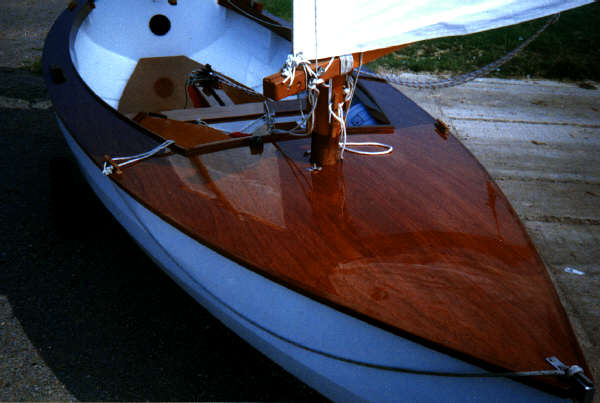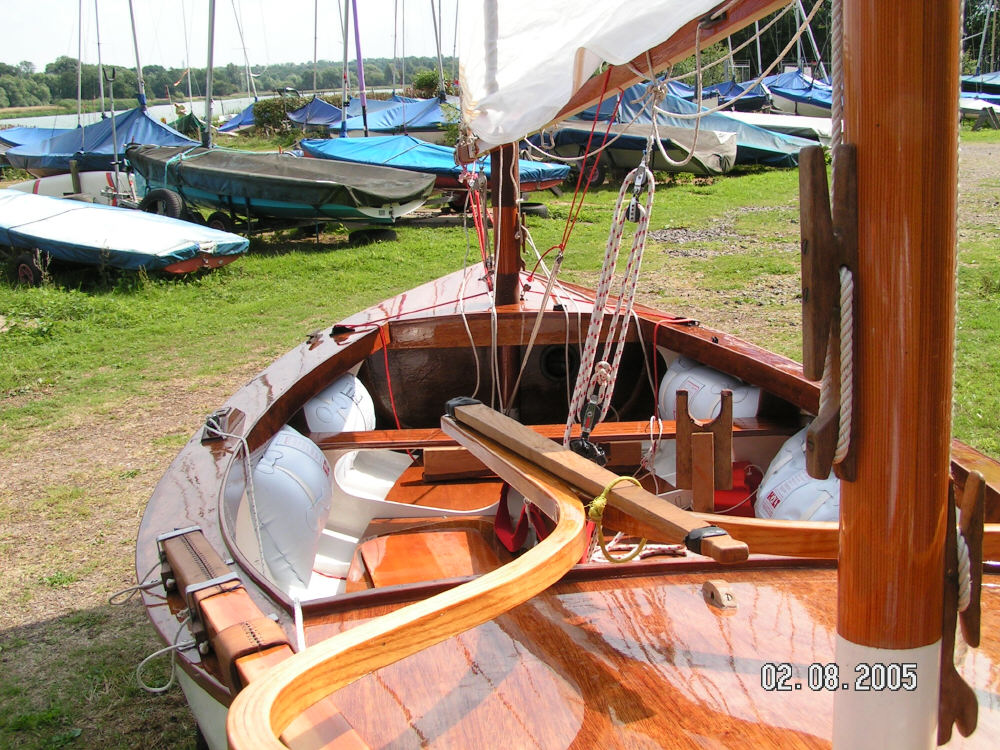
A Modified Canoe Yawl from the late 1880’s
Back in 1991, then totally unfamiliar with computers, digitisers and C.A.D. programs - though totally at home with conventional designing and lofting - I commissioned Paul Fisher of Selway Fisher Design to digitise accurately the original lines of George Holmes’ canoe yawl ‘Ethel’ of 1888 to produce an exact copy of the hull, which was then faired to produce a seven plank a-side stitch-and-glue carvel hull instead of the original clinker. The original lines were later stretched on computer to make the most of two scarfed 8 x 4 foot sheets of plywood, adding about 20 inches to the original length of 13 feet. [Holmes had decided on a mere 13 feet so that she could be transported easily by train in the guard's van to new cruising areas.] Fisher reproduced the original’s deck, cockpit, low aspect centreboard and rudder/tiller arrangements, but altered the rig to a standing lug main and mizzen. I produced my own deck and cockpit design together with a high aspect ratio semi-pivoting dagger board and lifting rudder, together with a tiller of far greater arc or swinging radius, and reverted fairly quickly to a balanced lug main, putting battens in the mizzen to keep the sail quiet when hove-to and to ensure the sail draws when the main is pinned in for pointing high.
The boat was built in the late spring/early summer of 1992 and has been used summer and winter since - mostly for club racing until about the year 2000 - without being repainted or varnished, and has never been stored inside but always in a dinghy park. The deck was originally intended to be painted cream, but was given a single temporary coat of varnish over the epoxy coating at the last moment as a friend suggested it would look better in a photo-shoot for the Boatman magazine, and the yawl has not been back inside since to be finished. Maybe next year... Or maybe not: it is fifteen years now and it's still looking good.
Campion Sail and Design February2000/2007
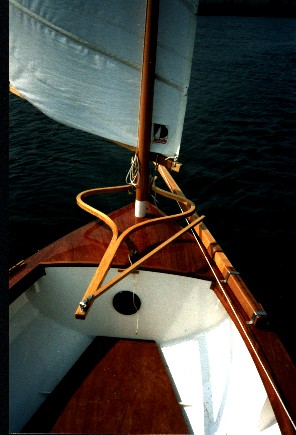
Here is my interpretation of a nineteenth century canoe yawl - drawing on Ethels 1 and 111 for direct inspiration, but longer at 16 feet as opposed to the Ethel 111's 15 feet, with somewhat more beam and freeboard and a more powerful midsection combined with a sharper bow, for greater power, stability, room and dryness in a sharp chop, and with the balanced lug rig developed from a decade and a half racing and cruising experience in the Apple and Iota. The deck layout is based on the modified one I developed for the Lillie, but with built-in side tanks and a sealed cockpit floor, with provision for water ballast if required. Construction is stitch and tape or glued clinker, with the lining out for the clinker hull drawn up at the beginning - and not added as a clumsy afterthought - to enhance the lines of this double ended dayboat
Racing the original Lillie in a fresh breeze
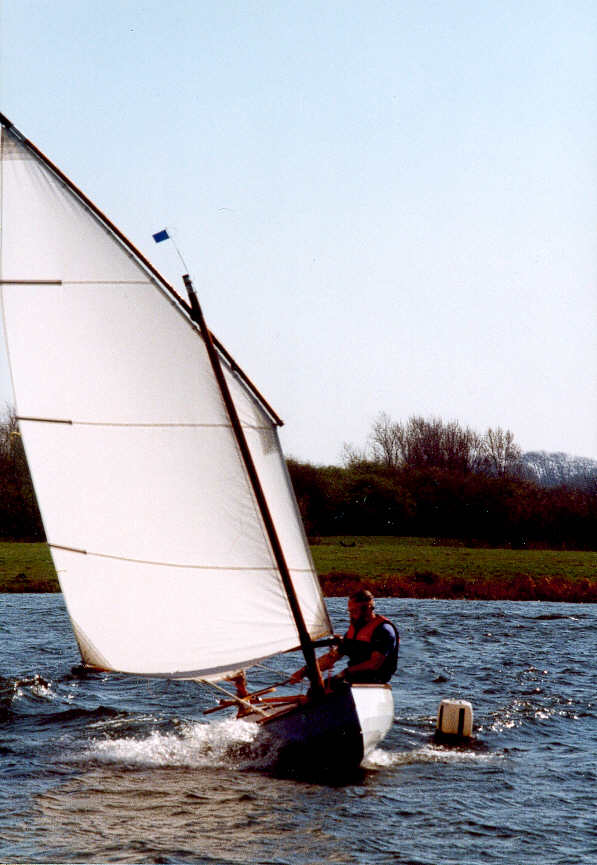
Turning the bottom mark to begin the windward beat in a fresh breeze. And, yes, canoe yawls do plane and plane well! Note, too, the lack of much twist to the main - essential both for power and docility off the wind - and comparable to any properly rigged bermudan sail. This is one of many mainsail designs cut and stitched by me for the canoe yawl and other designs. Note how the mast half disappears into the cloth reducing turbulence, the result being a flatter entrance, but with the drive still in the right place and a perfectly clean leading edge: this is why balanced lugs can be so efficient both on and off the wind if they are designed and rigged correctly for both light and strong winds, and why this canoe yawl has raced successfully at club level against Solos and GP14's. It is a pity that so many lug sails are poorly cut and set, with inadequate reinforcement and little control over the shape- particularly as there is little difference usually in price between the good and the truly dreadful.
Winter Racing - Lillie at Haversham Sailing Club on a tranquil day
This stretched canoe yawl gave me as much pleasure as the International 10 sq m sailing canoe - very different beasts, but with a common ancestry. There's something very appealing about double-enders and they tend to attract more than their fair share of attention on the water. The canoe yawl is far better equipped to take a partner and picnic hamper for a leisurely day-sail, though! Unless your name's Uffa Fox, of course.....!






